Inaugurated in 2012, The Fishermen’s Trail follows the wild southwestern Atlantic coast of Portugal, and — along with the Historical Way — is part of the longer Rota Vicentina walking route. Once described by Condé Nast Traveler magazine as being among the six “most beautiful coastal trails in the world,” The Fishermen’s Trail, Portugal, is so-named because it follows the centuries-old tracks used by local fishermen to access the best fishing spots along the this section of Portugal’s coastline.
I had originally planned to walk this trail in April 2020. But, we all know what happened to thwart those plans.
Back then the Fishermen’s Trail ran for 76 kilometres (47 miles) from Porto Covo to Odeceixe. However, it has since been extended to begin at S.Torpes Beach, 10 kilometres before Porto Covo, and end in Lagos — making the official Fishermen’s Trail route now a massive 230 kilometres (142 miles) long.
The full trail takes approximately 12-13 days to complete. So, as I only had five days’ annual leave remaining, I decided to stick to the original Fishermen’s Trail itinerary. I tagged a day on at the end to re-discover the delights of Lisbon.
Walking the Fishermen’s Trail, Portugal | When to Go
There is little shade along the Fishermen’s Trail, Portugal, so I would advise against walking it during the summer months, when temperatures can hit the high 20s and early 30s (celsius). At the opposite end of the spectrum, whilst Portuguese winters aren’t cold by UK standards, they can be (very!) wet. And, walking in heavy rain is not fun, especially if you want to be able to take some decent photographs along the way.
For a good balance of decent weather and manageable temperatures, I’d recommend walking the Fishermen’s Trail, Portugal, during the spring or autumn months (so, April-May and September-October would be your best bet). I chose to walk the Fishermen’s Trail (this time around) at the very end of March, simply because I had annual leave to use before the end of my leave year on the 31 March 2022. I figured that, whilst the weather wouldn’t be quite as reliable as it would be a month or so down the line, it should be mostly dry and relatively warm by then. I also thought it would be a good time of year to catch some beautiful springtime flowers in bloom, and that there would be fairly low numbers of hikers on the trail.
Walking the Fisherman’s Trail, Portugal | What to Pack
Obviously, this depends upon the time of year you plan to hike the trail, but, assuming you choose spring or autumn (as I did), here’s what I’d recommend.
Firstly, unless you pay for a luggage transfer (which, personally, I don’t think is necessary for a four-day hike), you’ll be carrying everything you bring with you on the trail. So, you’ll want to pack light. I fitted everything I needed (including my bulky DSLR) into my Osprey 20-litre day pack, and it was an absolute breeze to walk with. Apart from wishing I’d included a couple more pairs of socks (because hiking socks are thick and difficult to dry overnight without a heater), I was really pleased with my packing choices.
Here’s what I brought with me for my four days on the trail:
- Sweaty Betty thermal running leggings. These are just so comfy and soft and come with a pocket in the leg to store your phone when you’re not using it for navigation or to take photographs. I contemplated bringing a second pair of leggings but in the end I just packed these. Fortunately, although there were torrential downpours in both Lisbon and Porto Covo, the rain amounted to little more than drizzle and the odd light shower while I was actually walking the Fishermen’s Trail. Had it rained heavily, I would’ve been very grateful for a dry pair of leggings to change into.
- 2 x lightweight, quick-drying short sleeve tops. I have both Salomon and Rab ones that I love.
- 2 x lightweight, quick-drying long sleeve tops. I’ve got a black Rohan one that I’ve had for years (it came away with me on my 6-month stint in Peru and Bolivia in 2014) and is still going strong, and I also brought a Rab long sleeve top with me too. They’re great to use as additional layers when it gets a little bit chilly on the trail or later on in the evening.
- A North Face zip-through fleece. I’ve got the 100 Glacier fleece. Again, this is an item of clothing I’ve had for years and I still wear it everywhere. I love North Face gear!
- 2 x pairs of hiking socks. My thinking was that I could wash and dry a pair overnight, but only one of my rooms actually had a heater in it and the weather was mostly too cold and wet to dry anything outside. So, I would recommend that you bring a pair for every day you’ll be hiking the trail. I love Smartwool socks, but they are pricey. If you’re after a cheaper alternative then Bridgedale make some good ones too.
- A pair of flip flops or walking sandals. After wearing your hiking boots all day, you won’t want to wear them all evening as well.
- A hat. This baseball-style cap is great for hiking, because it keeps the sun off your face when it’s hot and the rain out of your eyes when it’s wet.
- A reusable water bottle. Prior to making this trip, I splashed out and bought myself one of these, and — aside from being permanently worried about losing it (get yourself a carabiner to secure it to your daypack!) — it’s the best decision I made. Although the tap water is drinkable in the larger cities in Portugal, it’s not generally advisable to drink it anywhere else in the country. So, it was a Godsend having one of these that I could fill up anywhere.
- Blister plasters. I use Compeed blister plasters and I would not go back to using normal plasters again. These actually stay in place, don’t lose their stickiness (if anything, they’re a bugger to get off!) and, as well as helping to protect the blister, aids the healing process too.
- Vaseline. I always carry a small tin of Vaseline with me on hikes, because I find that if I coat my feet in it before I put my socks on, it helps to prevent rubbing and therefore stops blisters forming (or, at least forming as quickly as they would without it). Make sure you pack it in your clear liquids bag, as it is classed as a liquid as far as airlines are concerned.
- Sunscreen. I almost always travel with hand luggage only (and therefore cannot bring any liquids over 100ml), so these pocket-sized roll on sunscreens by Nivea are absolutely perfect. I know they’re designed primarily for kids, but don’t let that put you off buying them for yourself — I find them so easy to apply, non-greasy and long lasting.
- Sunglasses. I’m not going to recommend any because it’s very much personal choice as to which styles you like and which suit your face shape, but make sure the ones you buy have sufficient UVA/UVB protection. Polarized lenses can also be beneficial as they filter bright light (whether that be directly from the sun or from reflective surfaces such as snow, water and sand) and improve your clarity of vision.
- Smart watch or activity tracker with GPS. Because you’ll want to map your walk on Strava 😉. I’ve got the Garmin Venu 2, which I also use to track my runs back home. It’s super accurate and has an excellent battery life.
- Waterproof jacket. Last, but certainly not least, this is something you’ll more than likely need at some stage if you’re hiking the trail outside of the summer season. I’ve got the Rab Downpour jacket, which I love. It’s lightweight, packable, and has kept me dry even in the midst of a cyclone in southern India.
Walking the Fishermen’s Trail, Portugal | Accommodation
Vila Nova de Milfontes is the largest place you’ll be stopping in, and only has a population of 5653 (2021 stats). So, as you can imagine, there’s not a huge choice of accommodation options available along the Fishermen’s Trail, Portugal. In light of this, my advice would be to book as far in advance as possible.
I stayed in a combination of hostels and guesthouses. Only one offered breakfast (in Porto Covo), but I had no problem finding somewhere to grab breakfast from in all the other towns. Breakfast usually consisted of a roll or croissant filled with cheese, a pastel de nata and a cup of coffee, and cost me approximately €4.
It’s important to note that a lot of the local cafes/bakeries don’t open until 8 a.m. However, as the daily distances along the trail are not massive, this still gives you plenty of time to enjoy a leisurely breakfast before setting off each morning.
Here is a list of all the places I stayed at along the Fishermen’s Trail, Portugal:
- Porto Covo | Calmaria Guesthouse. Probably one of the nicest places I stayed along the Fisherman’s Trail. Beautifully decorated, clean, spacious, comfortable, wonderful breakfast (buffet-style) included. I was also very grateful for the aircon unit in my room, which I whacked up to 29 degrees because it was wet and cold the night I stayed. There was also a clothes airer, which I positioned under the aircon unit in order to dry my clothes!
- Vila Nova de Milfontes | Raminhos Guesthouse. Another of the better places I stayed along the Fisherman’s Trail. My room was immaculately clean and beautifully decorated and the bed was super comfy! Catarina was a wonderful host – she speaks excellent English and did everything she could to make my stay as comfortable as possible. I also appreciated the heater in my room, and was able to wash a dry a couple of pairs of my socks during my overnight stay.
- Almograve | Almograve Beach Hostel. Location was great – just off the Fishermen’s Trail/Rota Vicentina, and easy walking distance to the beach and to Almograve’s small selection of cafes and shops. My room was spotlessly clean, bed was comfy, shower was fab, and there was even a hairdryer and somewhere to hang my clothes out to dry just outside the window.
- Zabujeira do Mar | Hakuna Matata Hostel. Super central location just steps from the seafront. Room was spacious and clean and the shared bathroom was right next door. The hostel owner was super friendly and spoke great English, and although I didn’t use any of the shared facilities (due to only staying one night), it looked like there was everything I could possibly need if I did want to do my own cooking. There’s also a lounge/TV room and dining area, so it’s potentially a fab social space to meet other travellers.
- Odeceixe | Bohemian Antique Guesthouse. I booked the ‘Moroccan Gypsy’ room and it’s one of those rooms that you walk into and immediately exclaim “wow!” Design goals right there! It’s decorated perfectly in keeping with the beautiful historic building it’s housed in – loads of vintage furniture and ornaments/wall hangings/trinkets. It’s also a split level room with the bed on the mezzanine, which makes it even more quirky. There’s a communal/chill out area across the corridor, or you can just relax on the sofa or one of the chairs in the downstairs area of the room itself. The cafe next door is owned by the same people – their bread is amazing! I ordered the dips Ao Largo when I first arrived, and they went down a treat.
How to Get to the Start of the Original Fishermen’s Trail, Portugal
The original Fishermen’s Trail begins in the pretty town of Porto Covo. There are direct buses from Lisbon’s Sete Rios Bus station, and the journey time is either 2 hours 10 minutes or 3 hours 10 minutes, depending on which departure time you choose. If you’re travelling on a Friday-Sunday, you’ll have a larger choice of departure times, including morning departures. The current price of a one-way ticket is €16.50 (correct May 2022).
To check current departure times and prices for Lisbon to Porto Covo, you can follow this link to Rede Expressos website.
There are also direct buses back to Lisbon from Odeceixe (the end of the original Fishermen’s Trail, Portugal), with a journey time of approximately three and a half hours. Buses leave Odeceixe from a different location to the one Google Maps marks as the town’s bus station. Head out of town the same way you entered Odeceixe on foot, and just before you get to the bridge, you’ll see the bus stop on the opposite side of the road.
Section One | Porto Covo to Vila Nova de Milfontes (20km)
View a map of this section on the Footpath app.
If you can make it work logistically, I’d recommend giving yourself a little time to explore Porto Covo before starting your walk along the Fishermen’s Trail, Portugal, because it’s a lovely little town, which I’m sure looks even prettier when backed with blue skies and sunshine. Unfortunately, it was raining heavily for the majority of the time I spent there.
I travelled to Porto Covo by bus from Lisbon, and arrived in town around lunchtime. After grabbing a spot of lunch from a very nice Italian restaurant called Bella Vita, I checked myself into my guesthouse and spent the entire afternoon exploring.
The monsoon-style downpours did their best to thwart my plans, but I persisted! I did find myself attempting to edit the raindrops out of my photographs when I returned home, though….
When I left Porto Covo the next morning, it was still incredibly overcast but the rain had, very fortunately, stopped. And, although the forecast was for an entirely cloudy day with a mixture of light showers and heavy downpours, the rain never arrived and the sun actually came out. Hiking along a coastal path is so much nicer in the sunshine!
Today was probably my favourite day on the trail, even in spite of the fact that the majority of the first day’s walk involves hiking on sand, and trudging through sand dunes uphill is hard work!!!

Good to know: Coastal trails are always easier to navigate compared to inland ones (you simply follow the coastline), but I was still super impressed by how well the Fishermen’s Trail was signposted. Look out for the blue and green stripes, and the blue directional arrows painted on rocks. You’ll find them at very regular intervals along the trail.
Highlights of the Porto Covo to Vila Nova de Milfontes section are:
1 | An abundance of secluded coves and long sandy beaches — all of them completely devoid of people (although, I suspect that may change the closer you get to summer). Praia da Ilha do Pessegueiro, Praia dos Aivados, Praia do Saltinho, Praia dos Nascedios, and Praia do Malhão are a few to look out for.
2 | Forte do Pessegueiro. Although this fort is not open to the public, you are free to wander around the grounds and snap a few photographs.
3 | Interesting rock formations. I’m no geologist (I normally rely on Stu to educate me on this topic when we travel), but I absolutely adored witnessing the many ways in which the sea (coupled with natural weathering and erosion) had sculpted the rocks along the shoreline.
4 | Nesting storks. Reportedly the only place in the world where white storks nest on sea stacks close to the water’s edge. You’ll see more further along the trail on day three, but your first sighting will be today, somewhere between Praia do Malhão and Ponta das Barcas. The exact location, as recorded on my phone photo is R. do Alcarial 8, 7520 Sines, Portugal.
5 | Arrival into Vila Nova de Milfontes. One of the first things you’ll spot as you arrive into Vila Nova de Milfontes is its imposing fortress — Forte de St. Clemente. It was built in the late 1500s to protect the town from pirate attacks. Definitely stop and have a look around this area before heading into town, because it’s absolutely stunning and is one of the reasons Vila Nova de Milfontes was my favourite of all the towns I stayed in along the Fishermen’s Trail, Portugal.
The town itself is also lovely, so make sure you give yourself time to explore it a little before settling into your accommodation.
Food and drink stops between Porto Covo and Vila Nova de Milfontes
You’ll only pass two cafes/restaurants on today’s route — one around 2.2 miles (3.5 kilometres) from Porto Covo and the other around the same distance from Vila Nova de Milfontes. A Ilha looked lovely and is in a wonderful location right by Forte do Pessegueiro, but I wasn’t ready for a coffee or a sit down after such a short distance from my start point.
When I reached Porto das Barcas restaurant, after 10.3 miles (16.5 kilometres) of walking, it was a completely different story, however. Porto dos Barcas restaurant looks pretty fancy inside, but you’ll find all the hikers sat on the terrace outside!
Where to eat in Vila Nova de Milfontes
My host recommended Patio Alentejano, and it did not disappoint. If you’re a fan of seafood, order the octopus — it was amazing!
Tasca do Celso also comes highly recommended but, unfortunately, it was closed when I was in town (perhaps due to covid or the fact that it was simply too early in the season?).
Section Two | Vila Nova de Milfontes to Almograve (15km)
View a map of this section in the Footpath app.
In comparison to day one, today’s walk is a nice short one. It’s also possible to shorten it even further by catching a boat across the Rio Mira rather than walking over the bridge.
I would say that I chose this option to avoid 2.5 miles of trudging along main roads (which is why most people decide to take the boat), but actually I wanted to meet the 24 cats who live down by jetty in Vila Nova de Milfontes, and the lady who looks after them all. To reach the jetty, simply walk down the stairs next to the fortress. The boat-taxi runs daily from 9 a.m. (except during December and January) and will generally leave when it’s full.
I grabbed some breakfast from Paraiso Cafe and arrived at the pier not long after 9 a.m. to find the boat lady busy feeding her cats and giving them their medication. As there were no other walkers down there waiting for the boat, I chatted to her for a while, petted and photographed a few of her 24 cats (all of which have names) and then paid my €5 boat fare, giving her an additional €5 for the cats.
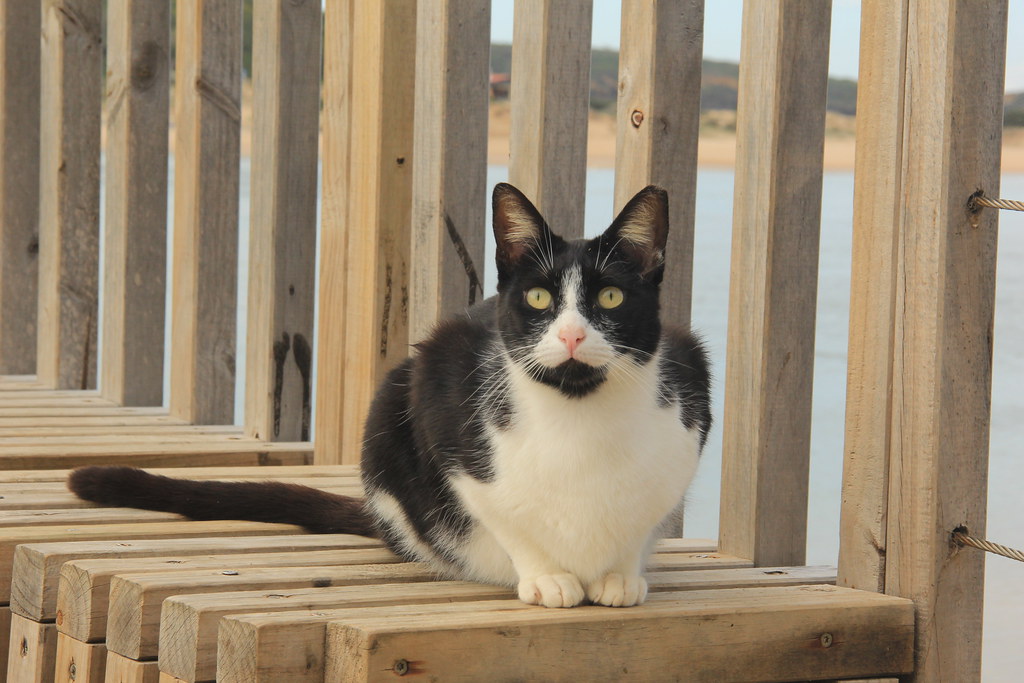
Surprisingly, no-one else showed up for the boat, so I had my own private taxi across the water.
When you arrive at the beach on the other side of the river, all you need to do take a right turn and follow the track down towards the Ocean Drive Beach Restaurant in Furnas, in order to re-join the trail. From here it’s a relaxing wander through forest and farmland before returning to the coast for the latter part of the walk.
As you approach Almograve, the official route will take you inland, but I’d advise sticking to the coastal route, as both join in Almograve. You’ll pass three lovely beaches, as well as being treated to some stunning views from the clifftops.
Highlights of the Vila Nova de Milfontes to Almograve section are:
1 | Colourful flowers and interesting plants. This is not something I really noticed much on day one (maybe because I was too busy being wowed by the stunning costal views), but today the plants and flowers on the Fishermen’s Trail really began to catch my attention, and I loved spotting both new and familiar species. From tiny little succulents growing in the sand to avenues of vibrant golden wattle trees in bloom, today’s sightings really helped to convince me that springtime is definitely the best season to be hiking the Fishermen’s Trail, Portugal.
2 | Yet more fascinating rock formations. Probably even more impressive than yesterday’s sightings.
3 | Making friends with horses and cows. I’m a huge animal lover, so it always puts a smile on my face when I meet them on my hikes — with the exception of the 40 or so young bullocks who chased my friend and I across a field a couple of years ago.
4 | The public toilet in Almograve. Yes, yes, I m aware that I sound like a weirdo by putting a public toilet on the list of highlights from today’s walk, but this is definitely the prettiest public toilet I’ve ever seen. There’s a cute little church just across the road too.
Food and drink stops between Vila Nova de Milfontes and Almograve
Aside from the Ocean Drive Restaurant in Furnas , you’ll not find anywhere to grab refreshments en-route today. That said, if you choose to take the boat across the Rio Mira right at the start, the whole walk should only take you just over three hours, so you’ll probably not need to stop anywhere.
If it’s a sunny day when you arrive into Almograve, you’ll probably find a bunch of other hikers enjoying a beer outside at O’ Lavrador. The staff aren’t particularly friendly here and there’s not much in the way of food on offer at lunchtime, but it’s a nice spot to relax for a couple of hours until you can check into your hotel or hostel.
Where to eat in Almograve
As far as grabbing an evening meal in Almograve goes, there’s nowhere really worth writing home about, so I decided to go out on a limb and head to the town’s Nepalese restaurant, Mar Azul. I thought it rather odd that a town as small as Almograve actually had such a thing. The decor and mix of music was, admittedly, rather bizarre, but the food was lovely, the service was spot on and we (I dined there with a fellow hiker I got chatting to earlier that day) were made to feel incredibly welcome.
Section Three | Almograve to Zambujeira do Mar (22km)
View a map of this section in the Footpath app.
Considering how small Almograve is, I was a little concerned about whether I’d find anywhere open for breakfast, but Nicola came to the rescue! Nicola is a mini market that also serves coffee, and there’s a small seating area outside. Breakfast consisted of a bread roll, a small tub of spreadable cheese, a coffee and two bananas. I ended up scooping the cheese out with my coffee spoon, because the mini market didn’t sell knives. You’ll find Nicola on Av. da Praia, between R. 25 de Abril and the town’s main roundabout.
It was raining when I left Nicola, and continued to rain on and off (albeit only light rain) pretty much all day, which was a shame because the first section of the walk takes you right up to the top of the cliffs, with stunning views down below.
A brief detour will take you inland, through consolidated sand dunes dotted with pines and eucalyptus, before heading back out to the coast, towards Cabo Sardão and its lighthouse.
Highlights of the Almograve to Zambujeira do Mar section are:
1 | Bright red sand colonised by hardy Mediterranean plants. I was enjoying the plants and flowers even more so today, because I could now identify them as well as simply photograph them. A fellow hiker introduced me to the ‘Seek’ app the evening beforehand, and I absolutely love it! All you do is take a photo of the plant or flower you wish to identify and Seek tells you what it is, what family it’s from, and which country it’s native to. It also saves all your discoveries, so that you can reference them at a later stage.
2 | The lighthouse at Cabo Sardão. The trail doesn’t actually take you to the lighthouse; it skirts around it. I thought I’d be clever and take a small diversion to go and have a look at the lighthouse close-up, but as soon as I walked in to the grounds, I was promptly told that I wasn’t allowed to be there. So, don’t waste your time by trying to do the same! Just admire it in all its glory from the trail itself.
3 | Even more storks nesting even closer to the shore. This time you’ll find them so close to shore that you can actually shoot an identifiable photograph on your mobile phone. Once you pass Cabo Sardão, keep your eyes peeled. You’ll spot them on the approach to Entrada da Barca.
4 | Stunning views from the cliffs just before your arrival into Zambujeira do Mar. Whilst you will have to deal with a long boring walk down a main road beforehand, hopefully the knowledge that you have some rather spectacular views to admire at the end of it, should spur you on. The Fishermen’s Trail path veers off to the right of the main road as you approach Zambujeira do Mar, and wraps around the headland, concluding with some jaw-dropping views of the town’s colourful houses perched on the cliff edge. It reminded me a little of Ronda in Spain, except with a lot less in the way of sunshine and blue skies.
Food and drink stops between Almograve and Zambujeira do Mar
You’ll find the first cafe (plus a few shops) in the very unremarkable hamlet of Cavaleiro, just before you arrive at Cabo Sardão. I’ve heard the service is pretty slow, but it’s located at a convenient mid-point, around 5.94 miles (9.5 kilometres) in.
After that, you won’t pass anything until you arrive into the tiny fishing hamlet of Entrada de Barca. Here you’ll find what is meant to be a very good fish restaurant called O Sacas. However, it was closed when I passed, and there were no signs that it had actually opened up for the season yet at all. So, if you’re visiting outside of the summer months, don’t bank on being able to dine here.
Where to eat in Zambujeira do Mar
Considering that I’d not seen much open on my brief stroll around Zambujeira do Mar when I arrived (the exception being the very mediocre ZDM Cafe, at the top of R. de Miramar), I asked the host at my hostel for some recommendations on where to go for dinner that evening.
Because the weather was verging on as bad as it had been when I arrived in Porto Covo, I figured it was a good idea to eat early and then head back to the hostel to chill for the remainder of the evening. So, I headed to my host’s recommendation, Sol Dourado, just after their advertised opening time of 6 p.m. It was closed. I peered through the window to find no signs that they were opening that evening at all. I stood in the doorway sheltering from the rain for around 20 minutes while I tried to figure out what to do, because nothing else seemed to be open either.
I eventually found a small bar filled solely with local men drinking beer and smoking cigarettes. I ordered a beer and a packet of crisps and thought that was going to be my lot for the evening until I was walking home just after 8 p.m. and discovered that the most expensive restaurant in town, Costa Alentejana, had opened its doors. Inside were several other hikers, so I concluded that this was probably the only place serving dinner in Zambujeira at the end of March. My meal was nice but overpriced, however, the decor and ambience were lovely and the staff were super polite and attentive.
Section Four | Zambujeira do Mar to Odeceixe (18km)
View a map of this section on the Footpath app.
I almost continued my journey along the Fishermen’s Trail, Portugal this morning without even searching for breakfast, because I didn’t want a repeat of the night before. But I’m glad I didn’t because I found Pôr-do-sol open, other people eating and drinking there and (what had quickly become) my favourite breakfast of a croissant filled with cheese, a coffee and a pastel de nata readily available at the counter.
The weather was still dull and overcast as I set off this morning, but it stayed (mostly!) dry and the scenery was pretty spectacular in spite of the stubborn cloud that continued to linger around. In fact, scenery-wise, it was probably my second favourite day on the Fishermen’s Trail, Portugal.
There are some narrow, steep, hands-on stretches at the start, but mostly it’s fairly easy walking with a few slightly more challenging ascents and descents along the way.
The trail stays close to the coast all day, with a brief detour inland through woodland dominated by conifers and acacias. The final 2.5 miles (4 kilometres) are along a road, with a river on one side and green hills on the other, and you’ll catch glimpses of Odeceixe, on the opposite side of the valley, as you walk.
Highlights of the Zambujeira do Mar to Odeceixe section are:
1 | Coming face-to-face with several African animals. If I hadn’t read about it beforehand, I’d have thought I’d wandered into some parallel universe when I emerged from woodland to be greeted by an Ostrich! A rich man from Angola apparently moved over to Portugal, brought several of his favourite animals with him, and subsequently set up a wildlife park. I can’t find any information about the place online (other than the fact that it exists), so I’ve no idea how ethical it is, but the enclosure the animals were in was huge, so they had much more space available to roam than they would have in a zoo. I’d say it’s more of a curiosity than a highlight, but it’s definitely a sight that broke up my walk a little and inspired me to take a little break.
2 | Views to wow you, even in bad weather. I was genuinely gutted that the sun didn’t come out today to complement them, but many of today’s views still had me stopping in awe to admire them. Praia dos Machados was one of my favourite viewpoints.
3 | The tiny fishing village of Azenha do Mar. You’ll find this little village approximately 6.7 miles along the trail from Zambujeira do Mar. It’s in a stunning location, and makes for a nice mid-way stop. Both fishing and seaweed harvesting are practised here.
4 | Your final destination and a walk up to the town’s windmill. I genuinely loved Odeceixe! It’s got a really relaxed, artsy, bohemian vibe, and a disorientating maze of narrow cobbled lanes and alleyways to pique your sense of curiosity and adventure. The endearing small town clings to the southern side of the Ribeira de Seixe valley that divides the two Portuguese regions of Alentejo and the Algarve, and is crowned by a 19th century windmill that is reportedly still in full working order to mill corn and wheat, though is seldom used. If the weather is good when you arrive, make sure you take a walk up to the windmill (Moinho de Odeceixe) for sunset.
Food and drink stops between Zambujeira do Mar and Odeceixe
I’ve read that there’s a coffee shop at Praia do Carvalhal, but I didn’t spot it, and I’m normally walking with my coffee radar constantly switched on. If you do happen to find it, then please let me know exactly where it is so that I can update this post. But, if not then the first (and only) place you’ll find a cafe/restaurant is Azenha do Mar. There’s actually two establishments to speak of — A Azenha do Mar and Café Palhinhas.
I stopped at A Azenha do Mar because, although there’s a road separating the restaurant from the viewpoint opposite, you still get some pretty nice coastal views from the seating area outside. Unfortunately, though, when I arrived, they weren’t serving drinks or food on the terrace (possibly due to how unreliable the weather had been over the last couple of days). But, had they been, I probably would’ve lingered longer than I did.
Where to eat in Odeceixe
There’s a nice cafe, called Ao Largo, in Odeceixe’s main square, which is owned by the same people who run the Bohemian Antique Guest House (where I stayed). The focus here is on healthy, seasonal, Mediterranean fare, and I’m pretty sure they bake their own bread on-site, it was so fresh!
I stopped here for snacks when I arrived as well as breakfast the next morning, but I dined at Assador Altinho in the evening.
Rated as Odeceixe’s top restaurant on Trip Advisor, and highly recommended to me by a fellow blogger, Assador Altinho is not a cheap dining experience. But, it’s definitely a worthwhile one. And I decided that it would make a fitting end to my four-day hike along the Fishermen’s Trail, Portugal.
You’ll find Assador Altinho on Rua 25 Abril, uphill from the town’s windmill. It’s a pretty small restaurant, so I’d advise booking ahead.
I ordered the octopus for my main (noticing a theme here? It’s my treat when I travel anywhere coastal), and my dessert was a delicious dish made from medronho berries that grow wild in the Algarve region of Portugal. Incidentally, they also make brandy out of them.
The following morning in Odeceixe, the sun came out, so I gave my calves another workout and climbed back up to the top of the village to Odeceixe’s windmill, snapping a few shots of its hilly streets and pretty red, white and blue buildings along the way.
I’d absolutely adored my four-day hike along the Fishermen’s Trail, Portugal; it’s just a shame that the weather wasn’t better on days three and four. But, that’s the risk you take when you hike out of season. And, personally I think it’s a pretty decent trade off to get the trail almost to yourself, and to be able to gaze down on all those beautiful, empty beaches.

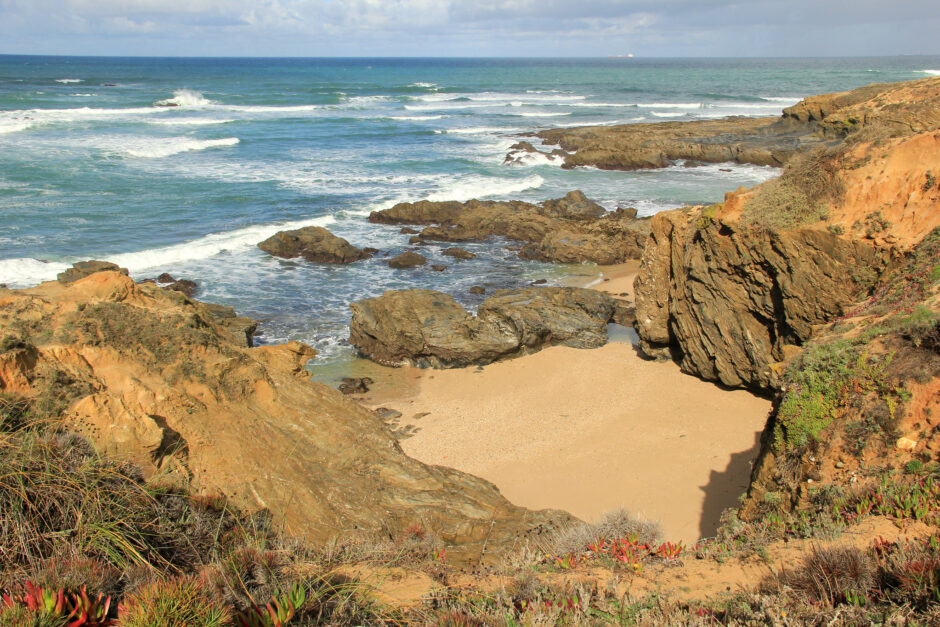
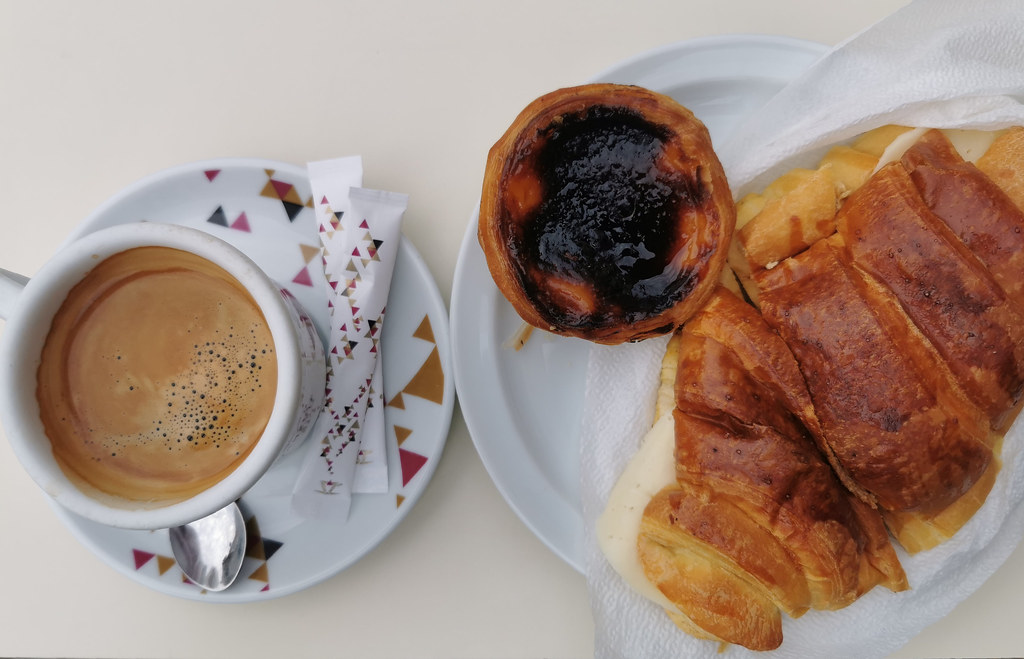


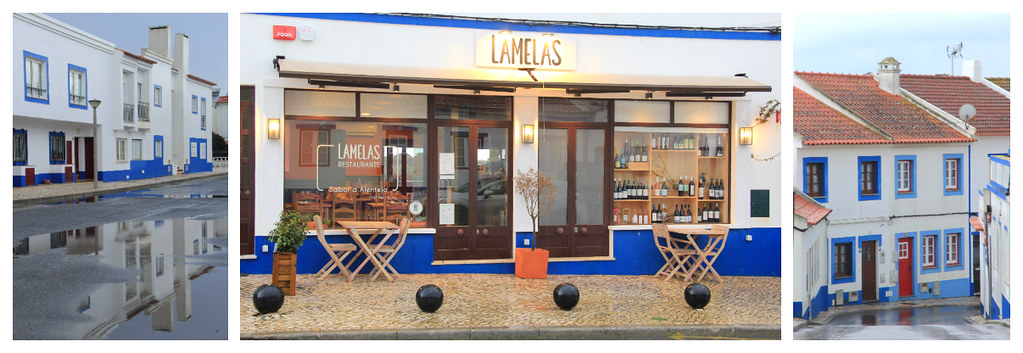
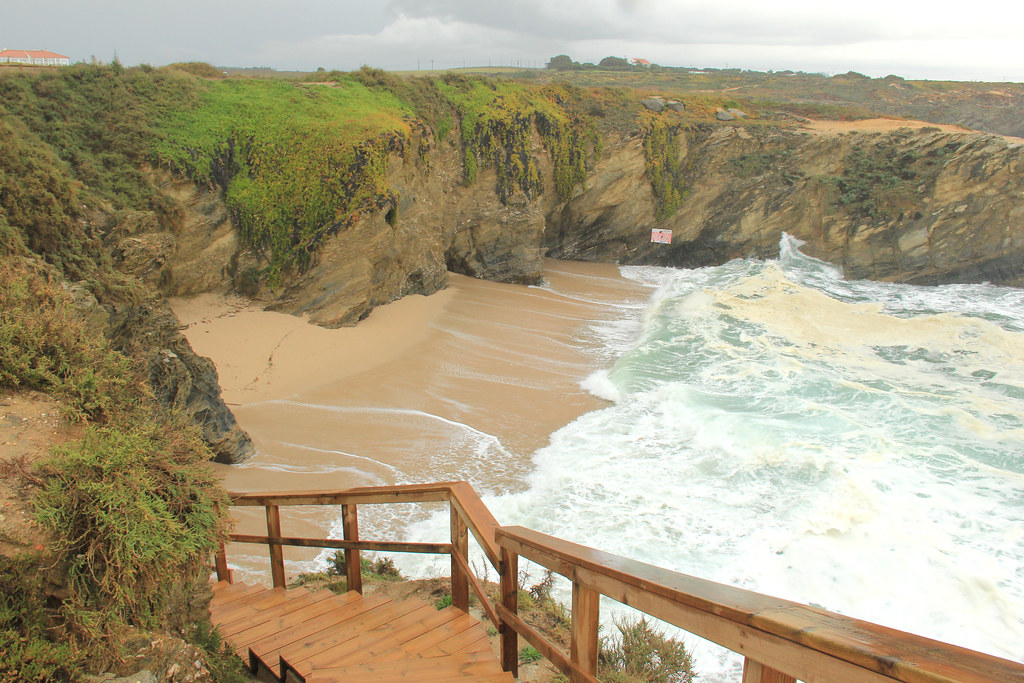
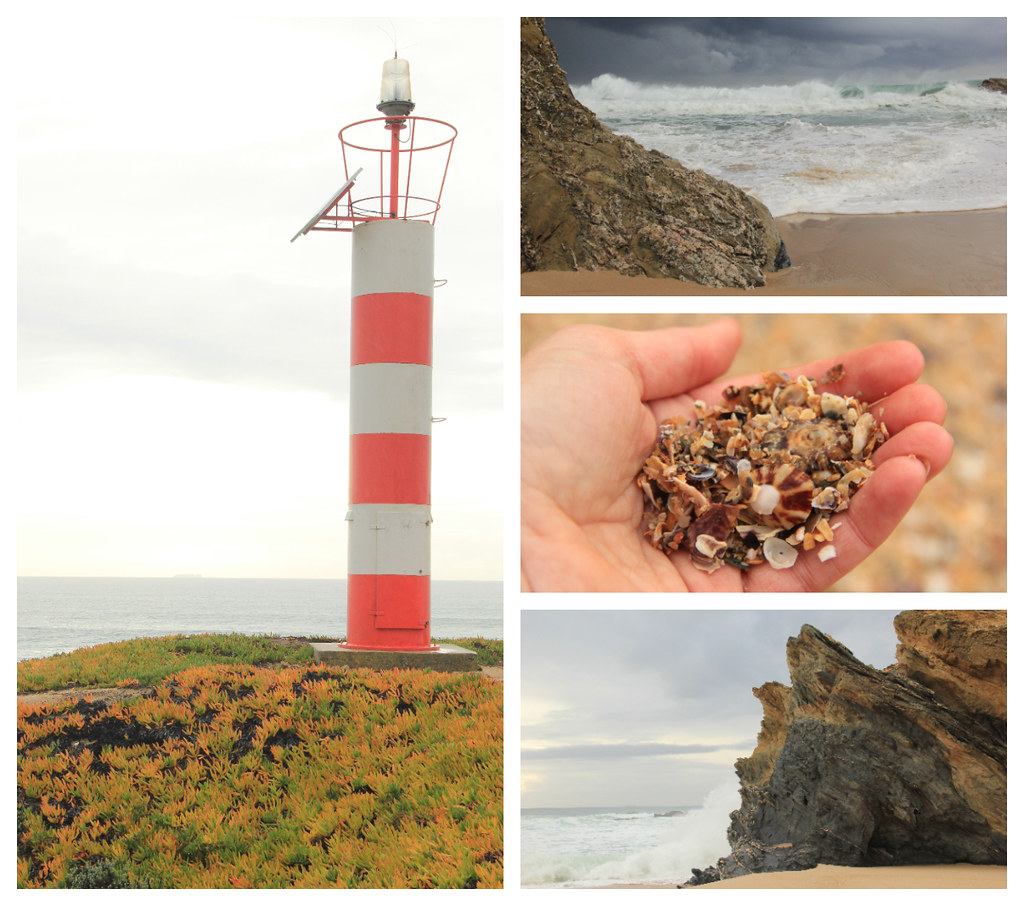
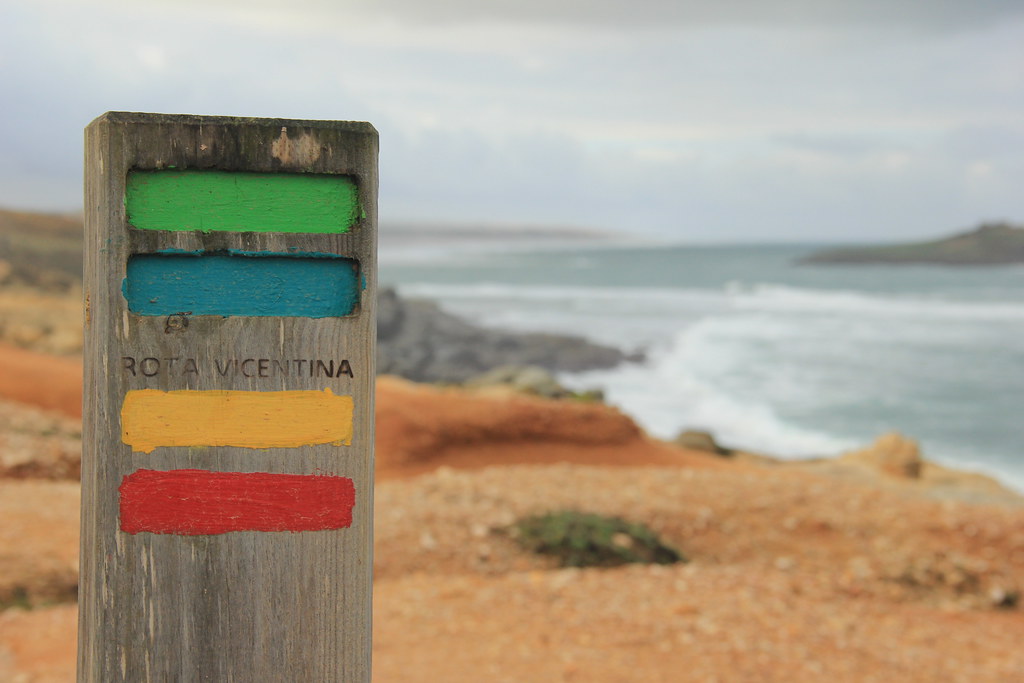
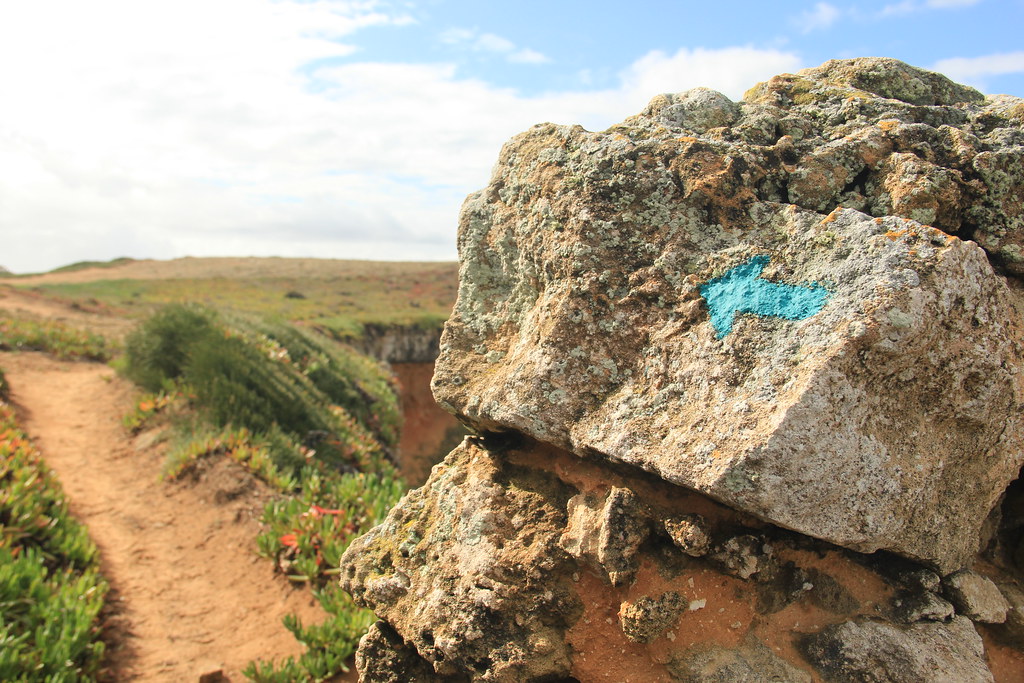


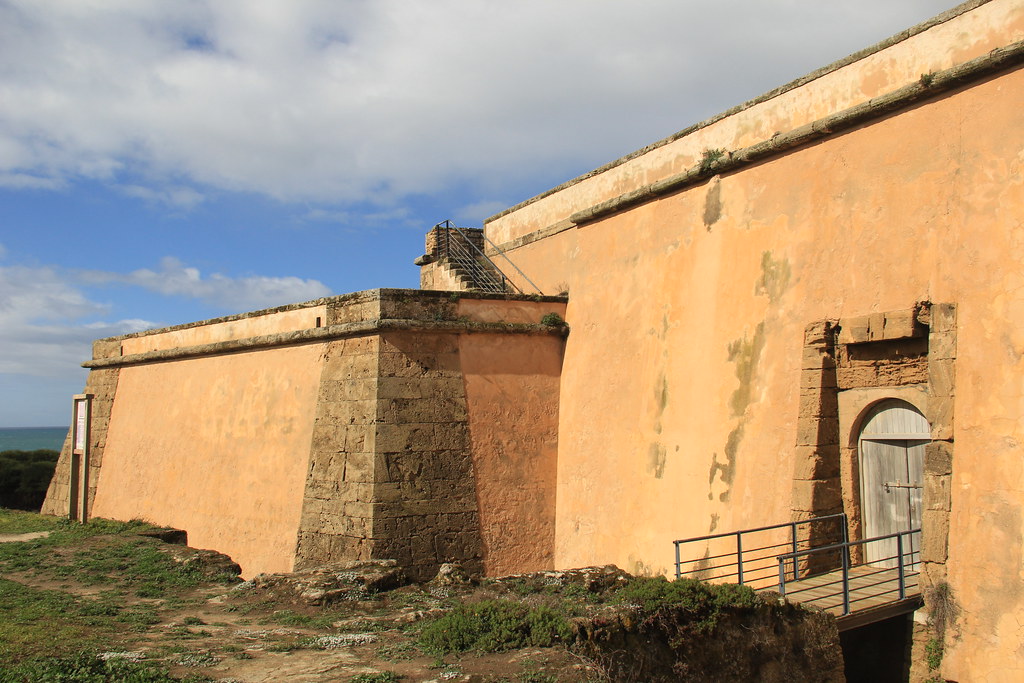




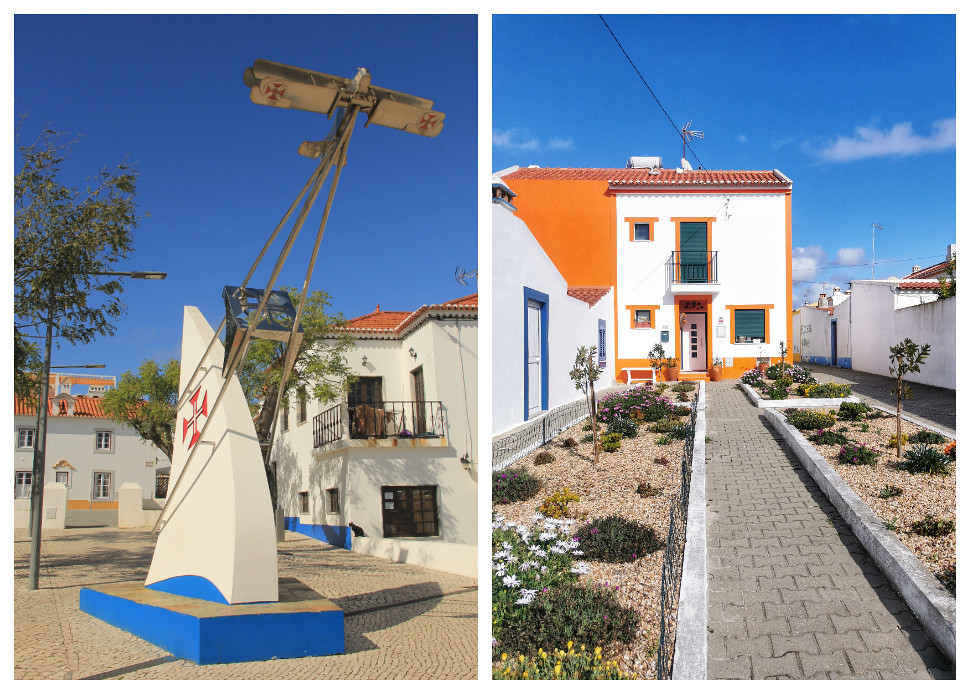

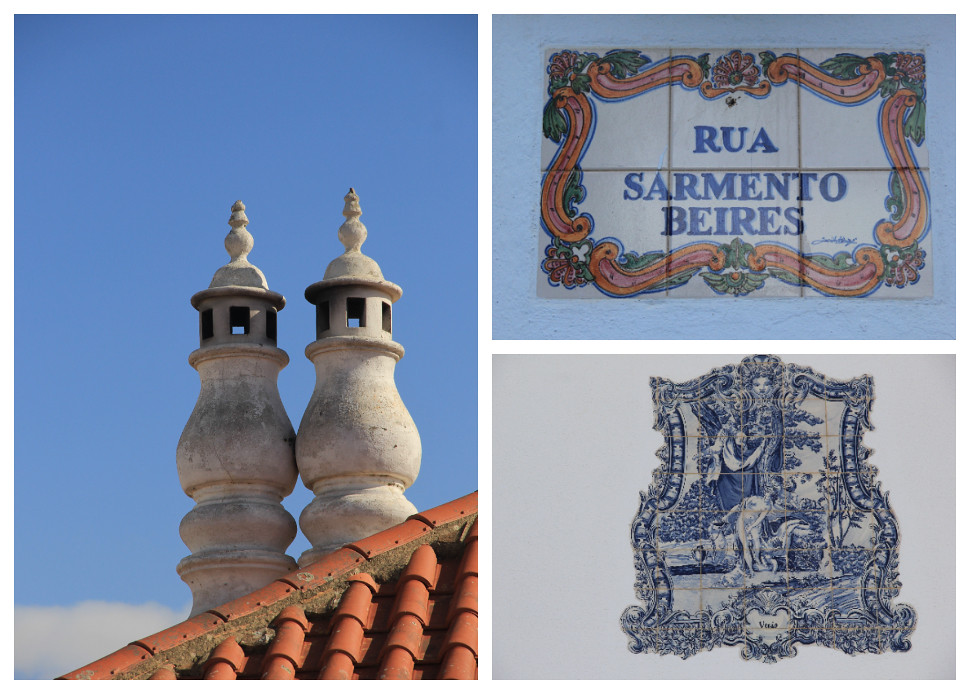
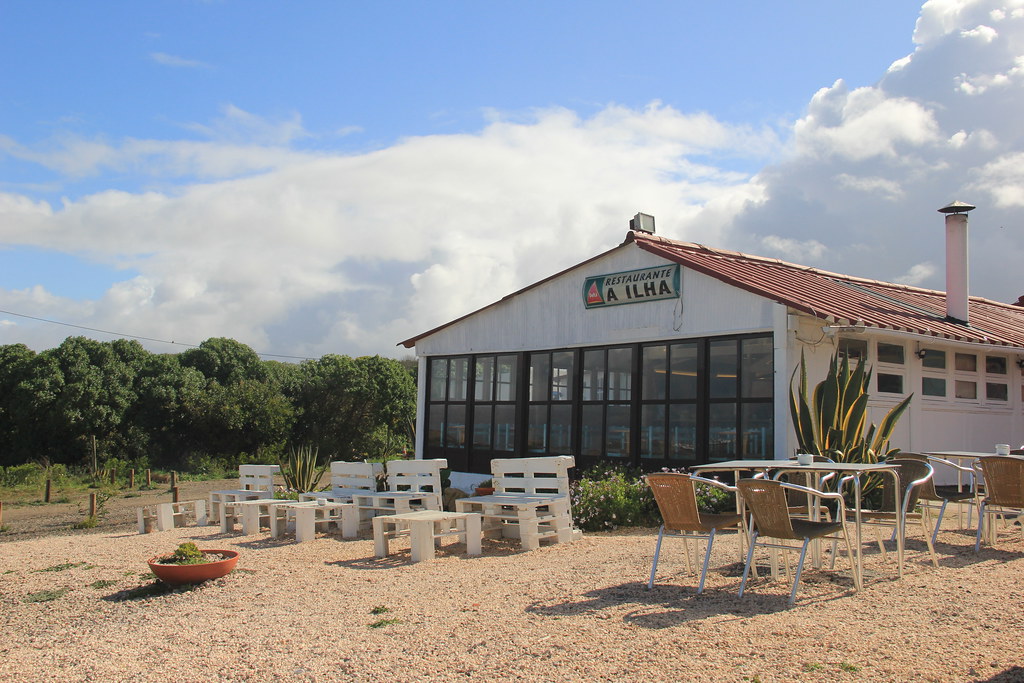


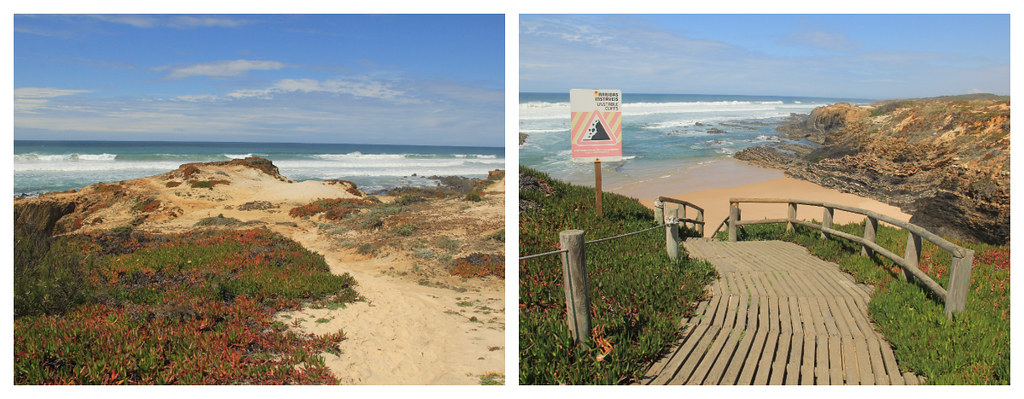




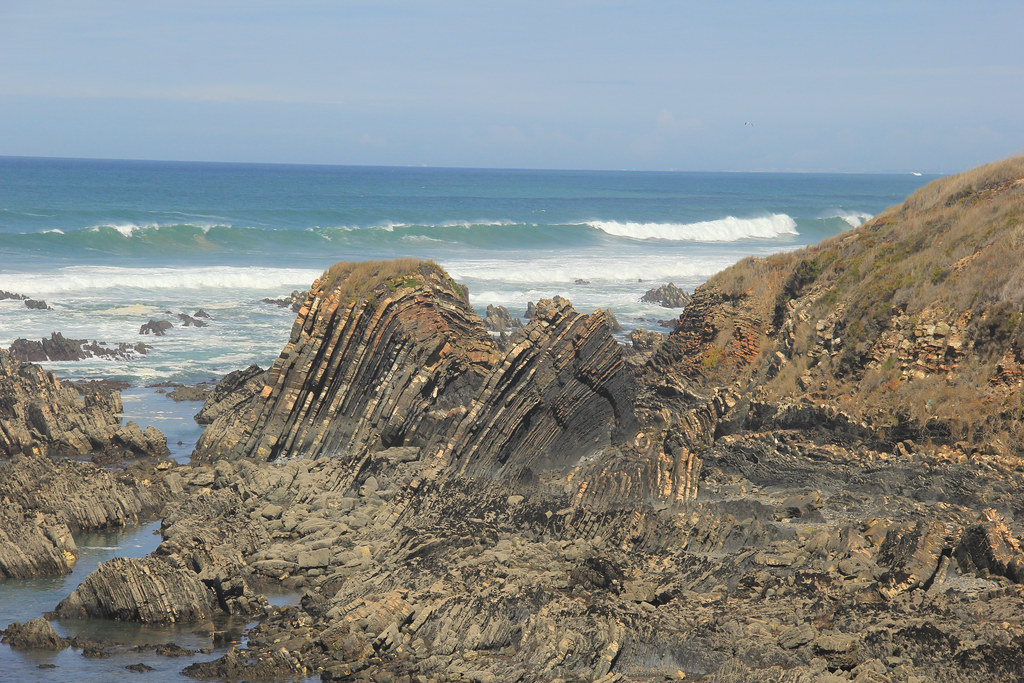

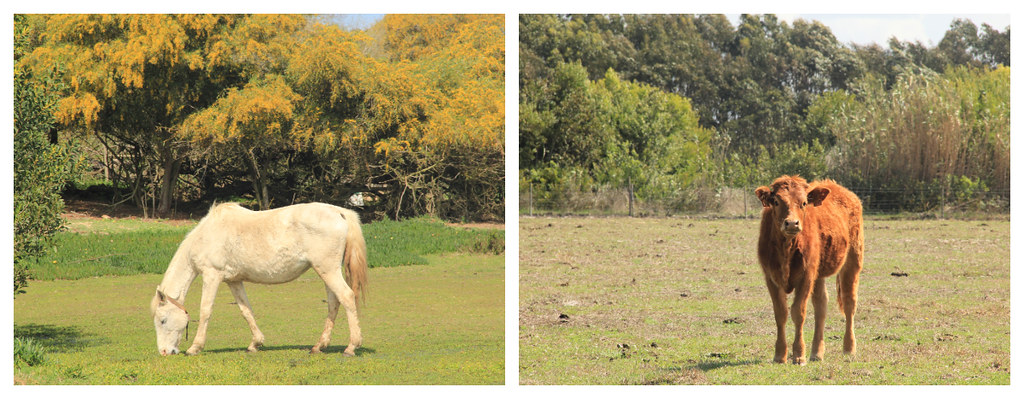





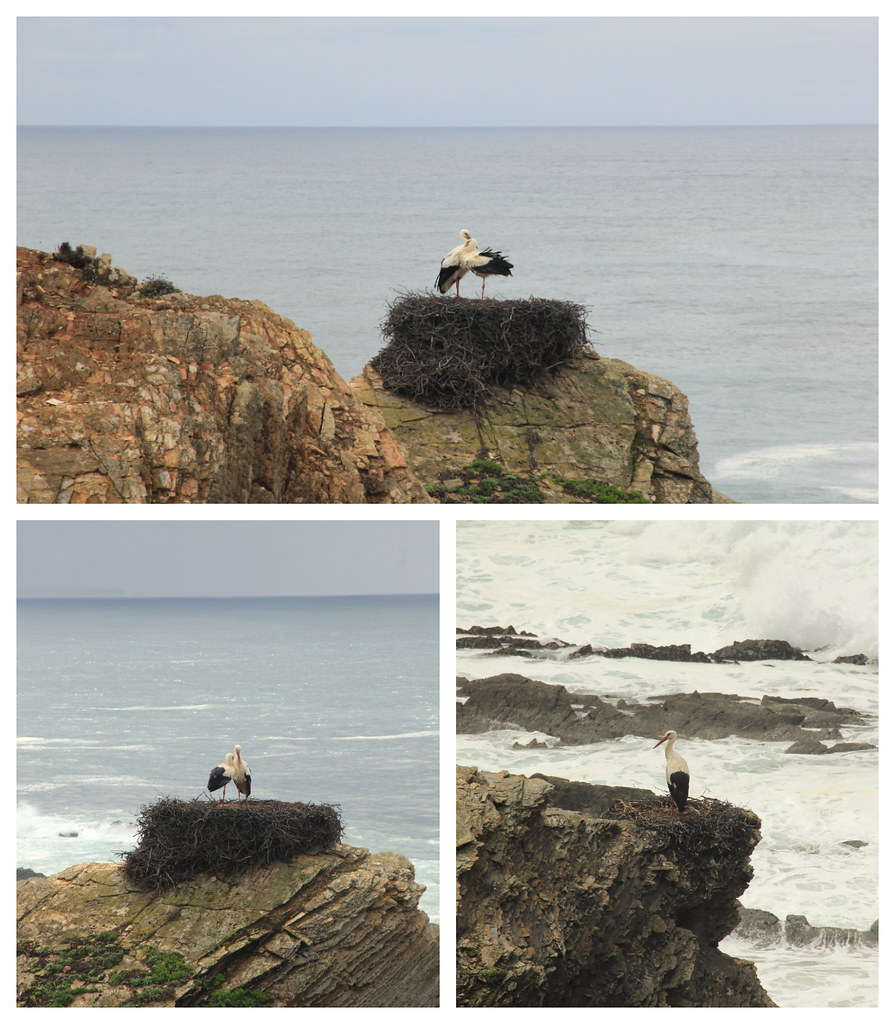
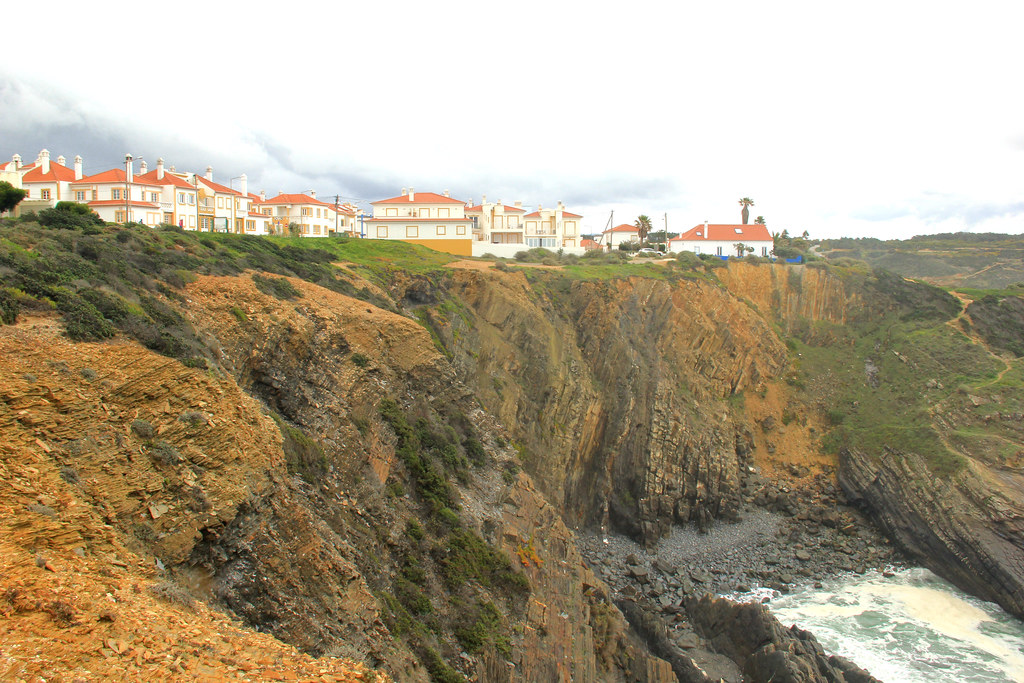

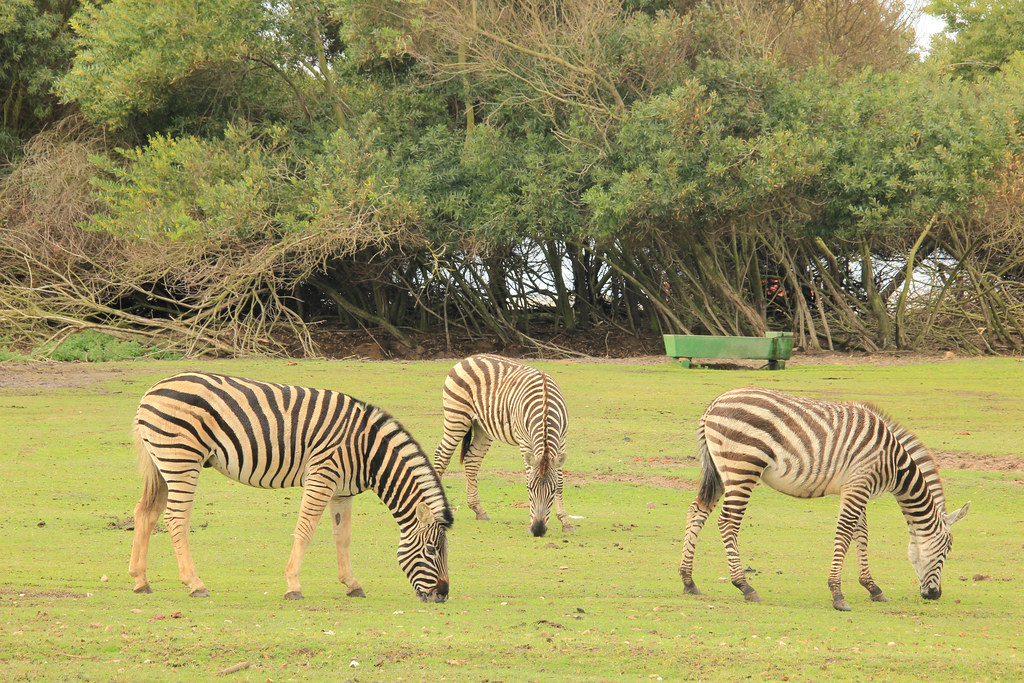
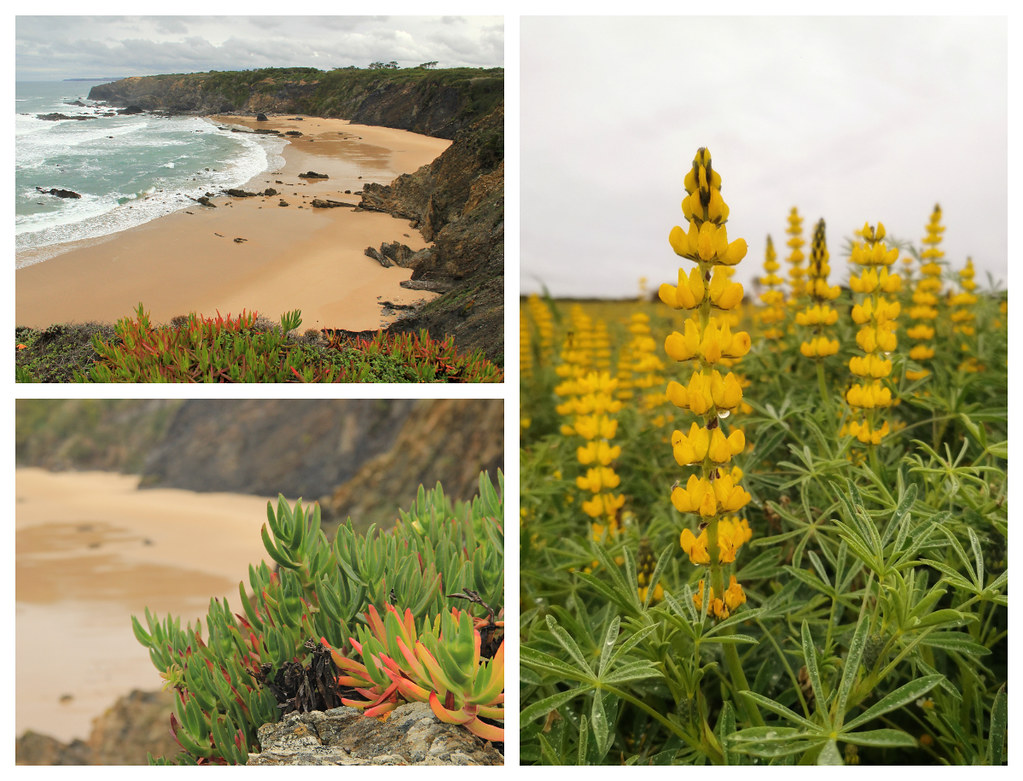


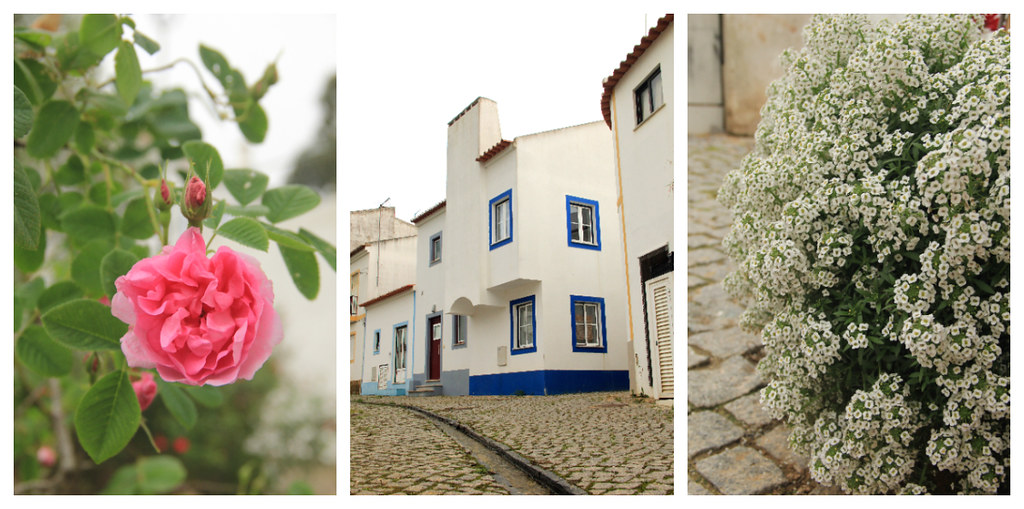


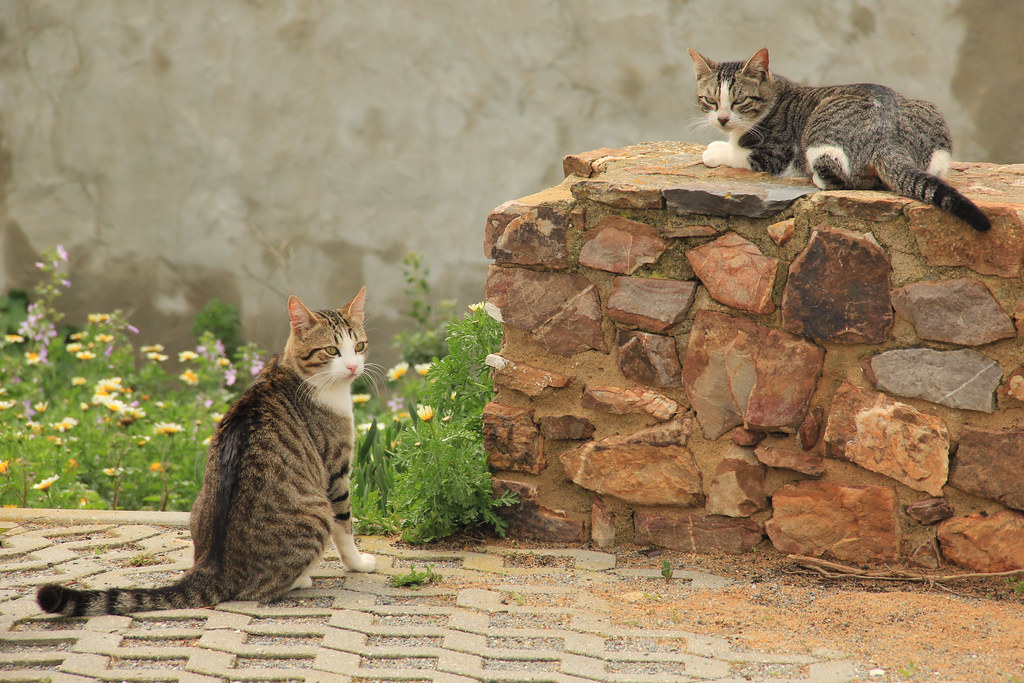




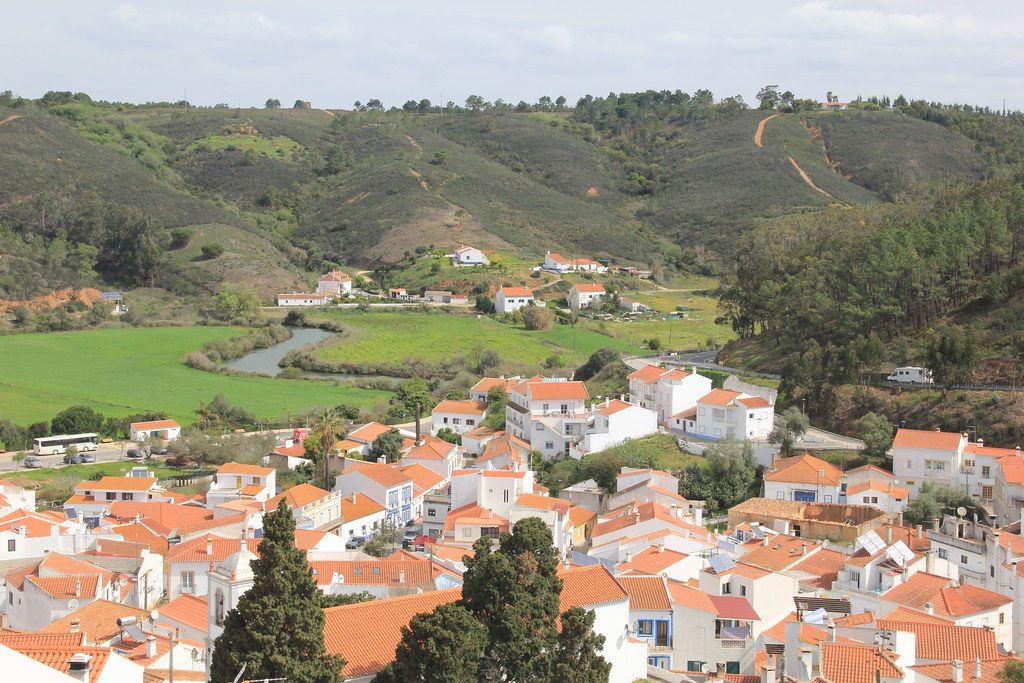
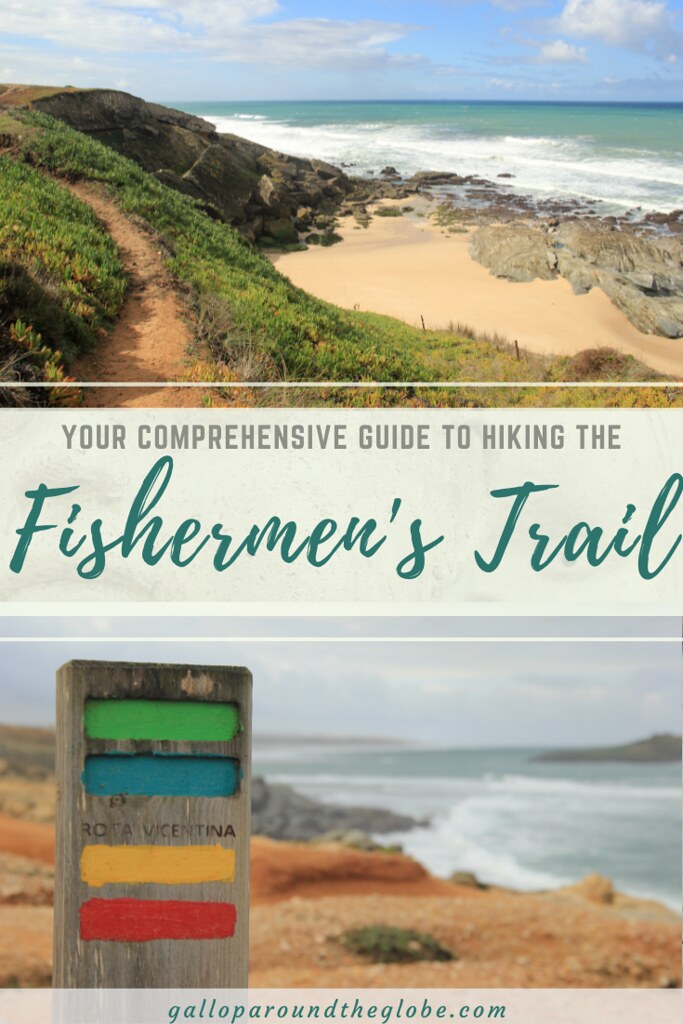
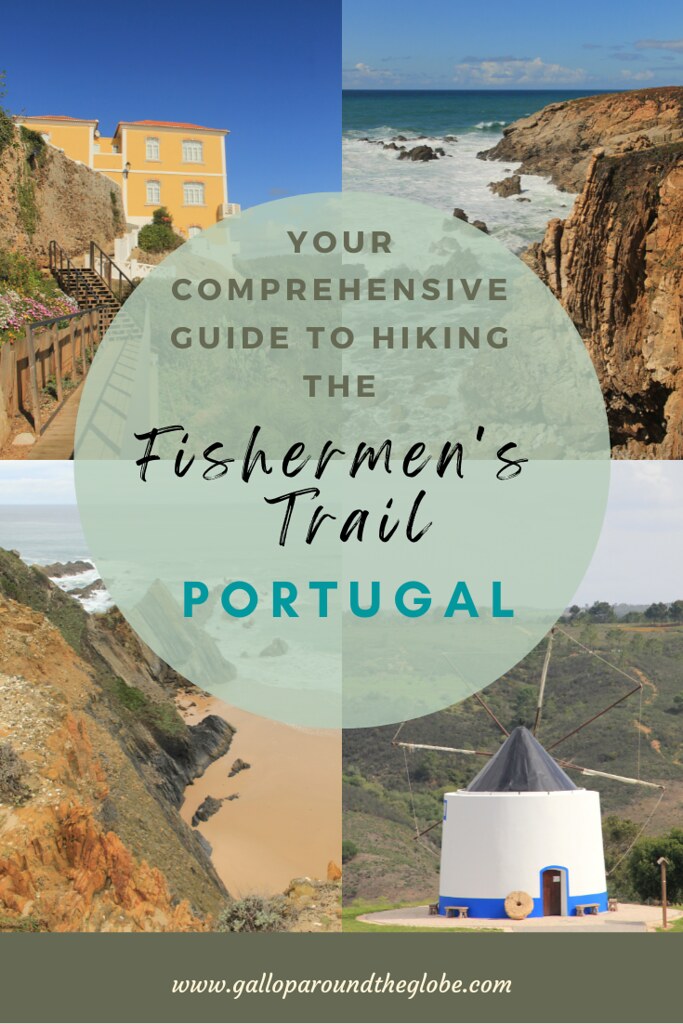






18 Comments
Oh my goodness what lovely photos, though I have to say the one with the kitty is my favourite 😉
Joking apart, thanks for your posts. We have just taken the plunge and booked flights for next month, and it is so encouraging to see that people like you are already travelling without any problems. Covid made me lose my travel mojo, so I cannot wait to get it back!
Kitty photos are always my favourites too 😉 Yes, I must admit, I was really hesitant about travelling abroad when I booked my first trip since March 2020 last September. But, covid tests and paperwork aside, it was much easier than I anticipated. So, that definitely gave me the confidence to book more trips. I’ve been making up for lost time this year!
Enjoyable and comprehensive blog. Thank you for putting in the time and effort to make it. I’ve noticed that there is an RV app and wonder if you used it. It has useful offline maps. One thing that bothers me a bit is the difficulty of the longer stages where there are dunes. I’m getting on a bit and worry that it might be too taxing. However, no one learned much about the world by staying at home so I have booked a flight to Lisbon early March. At the very least, it will be good to escape the uk winter.
Thank you – I’m glad you found it useful 🙂 I didn’t use the RV app, primarily because I wasn’t aware of it but also because I didn’t feel I needed an app – the book I bought gave me lots of info about things to see along the trail and the route itself was so well marked that I didn’t need to refer to my phone even once to check I was on the right path. The sand dunes are a bit of a killer to be honest, but it was only the first day (of the four I walked) that I would say they made up the large majority of the terrain underfoot. The other days were more of a mixture, and day two is a lovely short day. I hope the weather is kind to you in early March (as you read, I had 50% amazing weather and 50% overcast, slightly rainy days) and that you enjoy the trail as much as I did 🙂
Thank you for your detailed and encouraging writing. I want to do the extended 13 day route to Lagos..the only thing that concerns me is the amount of walking in Sand. You’ve helped me understand the first 4 days but does anyone know how much sand walking there is after this initial section?
I can’t answer this, unfortunately, but hopefully some of my other readers will see your comment and be able to respond or point you in the direction of someone else who can 🤞
Thanks for this very enjoyable blog. I’ve been waffling on hiking this trail in late September. I’m concerned that it might be still quite warm to be fully exposed. But reading your account makes me not want to miss any of it. Is it much of a hindrance that I understand no Portuguese?
Not a hindrance at all – English is widely spoken, even in the tiny little fishing villages. I barely know any Portuguese either! I’d say September would be a lovely time to hike it (I’d go for maybe mid-late September) – the weather should still be good, but not too warm for hiking 🙂
Hi Kiara,
I love your blog on the Fisherman’s Trail.
I’ll be in Algarve for 2 weeks so I have decided to start route in Odeceixe. I know I’ll be walking into prevailing winds. Start date is Mar 22nd. I have already booked rooms.
I seem to be walking in reverse of everyone else. Is this doable?
A crazy Canadian
Hi Annette 👋 I don’t see any reason why you can’t walk this in reverse – Porto Covo is just as nice a town to finish in as Odeceixe. Obviously, I can’t comment on whether the route markers are as easy to spot/follow coming from the opposite direction, but I would hope so! Hope you have an amazing time and that you enjoy the trail as much as I did 😀
Hi there, did you hike alone or along with a pal? I’m alone and looking for this kind of hike but wondering if doing it alone would be safe.
Thanks!
Hi Beatrice 🙂 I hiked alone and felt perfectly safe. As is the case with a lot of popular hiking trails, you meet others along the trail itself and in guesthouses/hostels/bars/cafes in towns and villages on route. So, if you wanted someone to hike with, I’m sure you’d be able to find someone. Hope you enjoy the trail!
Hi, I have enjoyed reading about your walk on The Fisherman’s Trail. Would you advise walking boots or trail shoes for this 4 day hike? Thinking about walking it end of April.
Really pleased to hear you enjoyed my post 🙂 I wore boots but mainly because I didn’t have a decent pair of trail shoes at the time. Considering that much of the first day was walking through quite deep sand, I’m not sure either would keep the sand out but at least something more lightweight would make the actual walking a bit easier (as walking through deep sand is tough!) On balance, I’d probably choose trail shoes if I did it again.
Thank you for this wonderful post! It gave me so much valuable info on how to prepare and also encouraged me to walk the trail alone. I’m halfway now, 2 more days to go. And it’s really beautiful! Thank you for all the tips! Knowing all this I can simply enjoy the walk 🙂
Ahh, so glad you found my post helpful and I’m really happy you’re enjoying the walk too 🙂 What have been your highlights so far?
I walked earlier this month with my 23 year old daughter. We had a great time. Thanks for your post.
Ahh, so glad you enjoyed the trail, Emma 🙂